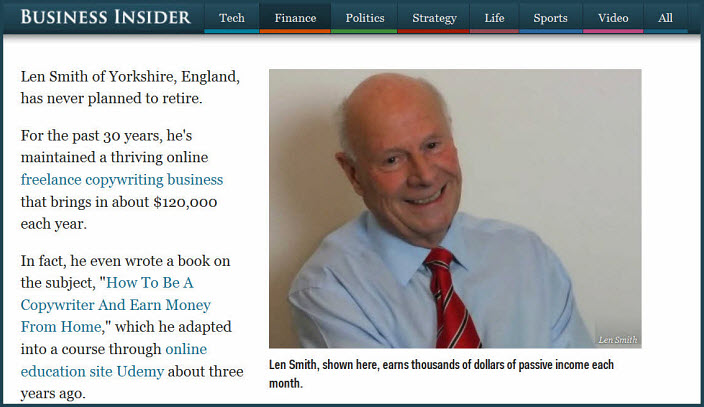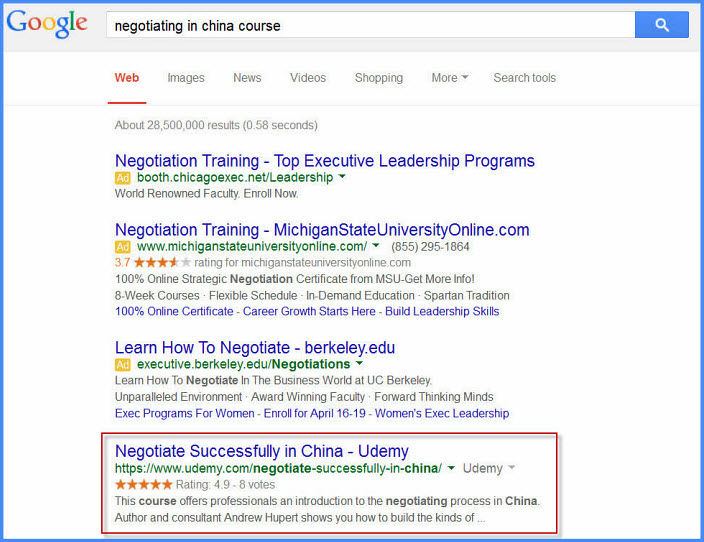by
Courtney Eckerle, Manager of Editorial Content
THE CUSTOMER
Udemy is the world's largest market place for learning and teaching online, according to Shannon Hughes, Senior Director of Marketing, Udemy.
"So what that means is that we have over 12,000 instructors who have created over 22,000 courses on topics ranging from programming to yoga to knitting. Really just about anything you can imagine. One of the fundamental things that makes Udemy unique is that we actually have a platform where everyday experts can create online courses," she said.
Udemy is an international website, so about two-thirds of users, both students and instructors, are outside of the U.S.
"We have a diverse set of people who have some stake in Udemy in some way, shape or form. So we have our students, who are scattered all over the world from 190 countries, taking courses in about 80 languages … We also have our instructors who are also scattered all over the world," she said.
The other group that interacts with Udemy are businesses that participate in Udemy's B2B solution.
"We have a product that's called Udemy for Business, and that's essentially a library of some of our best courses that are available as a subscription for companies … So it's a really broad set of people that we need to connect with and engage with," she said.
CHALLENGE
"Udemy has been really focused on trying to figure out, there's so much great knowledge and content out there, how do we get it online?" Hughes said, adding that, "we really don't tell our instructors what it is we want them to teach. People come to Udemy with an idea of what it is they want to teach and create a course from there."
Because of the huge group of users for Udemy, including 5 million students, over 10,000 instructors and hundreds of companies, "we needed to make sure that we were actually listening to the conversations that were happening out there and [that] we had a pulse on what it was that people were saying. So it wasn't just so much that we needed to know what people were saying about Udemy on Twitter, but that actually needed to be across multiple channels and multiple types of media," Hughes said.
Before this campaign, Udemy was unable to see discussions that were happening on instructors' personal blogs or those conversations happening outside of the U.S.
"We felt like we were missing pieces of conversations or we were missing conversations entirely, and so that was a lot of what drove the decision was … trying to understand better places where we had just been missing that conversation," she said.
CAMPAIGN
"Our customers, whether that's students or instructors, are really the best ambassadors for the Udemy brand. And we want to make sure that we're connecting with those people when they're engaging in conversations online and make sure that we're supporting them," Hughes said.
Even with people who aren't saying positive things about the company, the team wants to be present and connect with those conversations as well.
"[What] we wanted to do — actually at a baseline — was just to get a better sense of what were the conversations that were happening, what was the overall sentiment. That was the first step of this," she said.
Another step was to identify key influencers who were talking about Udemy and make sure they felt supported, Hughes said.
"The next phase of this is really, 'How do we take what we know so far and build out a really great content marketing strategy to support it, and also push it further?'" she said.
Step #1. Familiarize team with a new content process
Students and instructors are engaging with the Udemy on a growing number of channels, from Twitter and Facebook, to their own personal blogs.
The marketing team needed a way to have constant insight into these conversations, and to do so, enlisted a vendor to help them curate the independent content and social media mentions of the company.
"We did need to do a little bit of training with the team just to understand … where should we be looking for various things," Hughes said.
There was one person on the team, the PR coordinator, who dedicated an hour or two a day to look for coverage and to see if anything the team has sent out was picked up by media outlets. The main objective of this is to see if there are "conversations that are happening out there that we either want to monitor or somehow engage in," she said.
Once they had an ear into those conversations, the team needed to figure out a process for how to engage with users, and beyond that, key influencers.
Step #2. Cultivate key influencers
A "key influencer" could be a lot of people, according to Hughes. The main requirement, though, is reach.
"This could be instructors that have particularly large followings. So if you were looking at an instructor who might have their own YouTube channel, or maybe they have their own very popular blog, then those are the kinds of people that we want to make sure that we're engaging with to make sure that we know what … it is that they're sharing with their audiences," she said.
Some of these professors are so passionate about what they're doing with Udemy, it is important to be able to connect and have a conversation with them, Hughes said.
"In the past, we just wouldn't have had that information at our fingertips in that way, to be able to connect with them on those topics. So when somebody's really excited about their course or they're sharing with their network, 'This is how many students are enrolled in my course,' or 'This is how much I've made this month on Udemy,' to be able to engage in those conversations with them is really key," she said.
It's also important to see people's reactions to that content, Hughes added, and be aware of comments that can be "really powerful."
A different group the team wants to focus on is journalists. For example, reporters for
USA Today have followed or retweeted something about the Udemy brand, and "we've been able to reconnect with that reporter and have a conversation that hopefully will end up resulting in some coverage," she said.
Another example is when the team put out through Twitter, Facebook and the Udemy blog a
comic infographic about Grace Hopper, a famous computer scientist, on her birthday.

Click here to see the full version of this creative sample
"We have a cartoonist, actually, who's on our design team, and he had put together a really cool cartoon about Grace Hopper. So we wanted to get it out into the world and see where it went and work to get it placed on some blogs and things like that," she said.
The cartoon was shared on Facebook almost 300 times, tweeted over 300 times and shared on Google Plus 160 times, as well as driving over 20 comments on the Udemy blog. One notable person who retweeted the cartoon was television anchor and journalist Deborah Norville.
"That is great in terms of understanding where coverage is appearing and for us to be able to reshare that content out is really important," she said.
Before making this content a priority and dedicating time to reviewing it, "Honestly, I don't know that we would have seen all of that," she said.
Step #3. Curate stories for content
There are people all over the world who use Udemy in interesting ways, Hughes said, so one of the key things the team has been looking to do is figure out what those compelling stories are so they can create content from them.
"So, in some cases those stories, because we've written them up and shared them out, have ended up becoming media stories for us, where then we've ended up in
Business Insider or Huffington Post … those kinds of publications," she said.

Click here to see the full version of this creative sample
Some have simply lived on the Udemy blog, she added, but what Hughes believes is "[with] a business like Udemy where there's some kind of marketplace component, a lot of it boils down to the individuals who are passionate about your product and using your product … how does it fit into their lives, and making sure that you're really telling that story," she said.
When your customers are having a shared experience, it can add up to something powerful, she said, adding that, "you need to get those initial grassroots local stories out there."
Accomplishing that involved a combination of monitoring from a social standpoint to see where people are saying interesting things about their experience on Udemy and also working with the support and instructor teams, Hughes said. This way, the team will know when users are saying positive things about their experience or when instructors hit milestones, like a certain number of students or revenue.
"It's all those things together that come up with … the list of people that we should be reaching out to," she said, adding that the next component is "actually going out to have a conversation with those people to understand what it is that they're doing with Udemy. Do we think that that's something we want to share with the rest of the world?"
From there, the team tried to figure out where that story is best placed, either on the blog or shared on bigger publications.
"But the first kernel of it has really been a combination of listening, whether that's using tools, the social listening kind of tools, or listening through our support team or listening through our instructor team. That primary part of it has been starting with just, OK, what's actually happening out there, and how do we get those stories to the surface quickly," she said.
The importance of this kind of word-of-mouth is that it is so much more powerful to users and potential users, Hughes said.
"The instructors and the students are the heroes of our business, and the enterprise customers that we have … We just need to make sure that we're figuring out where those stories are and able to articulate them in a meaningful way," she said.
Step #4. Optimize course language for SEO
The way a lot of people discover Udemy is by searching for something that is in one of its courses, Hughes said.
"We do have this platform where anyone can create an online course. It means that we are able to capture a lot of the long-tail terms," she said.
Hughes gave the example of a topic such as negotiation. Since many businesses and professionals use the website, there are many courses taught around negotiations across several different angles.
"So you might find a course on negotiating for women,
negotiating in China, you start narrowing down what it is that people are looking for, and you'll see a lot of Udemy first-time students come … directly to the course landing page because they've done a very specific search, and it turns out there's actually a Udemy course that's around that," she said.

Click here to see the full version of this creative sample
Those people might not necessarily be looking for an online course, she added, just content around the topic. However, once arriving on the course landing page, they may realize this course is exactly what they need.
"So it's really important for us that the course descriptions are really clear … we have a ton of long-tail activity because of the nature of the courses that we have on Udemy and how it is that instructors create their own courses," she said.
Within specific topic areas, such as programming and technology, the team is focused on building out a lot of Udemy content to make sure the company has pages people can land on that aren't just one specific course.
"So if you're searching for Java or you're searching for Apple Swift programming language, you'll get to a page where you'll actually have a collection of courses that you would be able to choose from. So that's definitely been an ongoing effort for us as well," she said.
Step #5. Share customer insights throughout the organization
Hughes and her team send out a weekly internal email to share different insights and "wins" that they've had.
These updates could include different PR elements, such as high-profile or influencer interactions on social media, blog content or company mentions in external publications.
"That's something that we're very focused on as a company, and people look forward to that. We send it out Friday afternoon, and it kind of recaps the week, which is fun," she said.
As a metrics-driven company, Hughes added, it is important for all employees to understand "where it is that traffic is coming from and what's converting the best. As we're able to make sure that the pages where people land on Udemy are high-converting pages, we definitely monitor that success and share that out with the team."
RESULTS
"For us, it was really starting with the initial piece of, 'How do we listen to … [and have] a good pulse on what it was that was happening?'" Hughes said.
A big part of this was also amplifying those conversations and engaging with influencers. The next piece, she said, is to put more of their own content out and do so effectively.
From this effort to concentrate on external conversations, the Udemy marketing team was able to see:
- A 43% increase in Udemy mentions across social media channels
- A 12% boost in positive mentions
- A 35% boost in people engaging with content
"Once you start hitting something like 5 million students, there's just a ton of activity that starts happening around that. What I think we've been able to do is we've been able to see that activity a lot better and tap into it and make sure that we're able to amplify it in a way that in the past would have been difficult for us," Hughes said.
"I'm really excited about more engagement with our audience, with students and instructors and enterprise customers. I'm excited about doing some more integrated marketing campaigns to be able to connect with those audiences and seeing them flourish on social," she concluded.
Creative Samples
- Grace Hopper tweet
- Business Insider article
- "Negotiating in China" search
Sources
Udemy Viralheat — Udemy's vendor
Related Resources
Content Marketing: How an energy data company's content strategy increased leads by 733%B2B Content Marketing: 100% increase in lead gen for customer service software companyContent Marketing: User-generated content tips from Jimmy Wales of WikipediaInbound Marketing: 5 tips for cultivating user generated contentSign up for MarketingSherpa's Inbound Marketing newsletter












